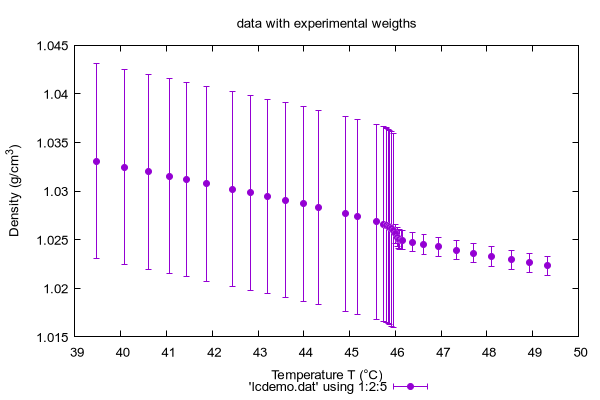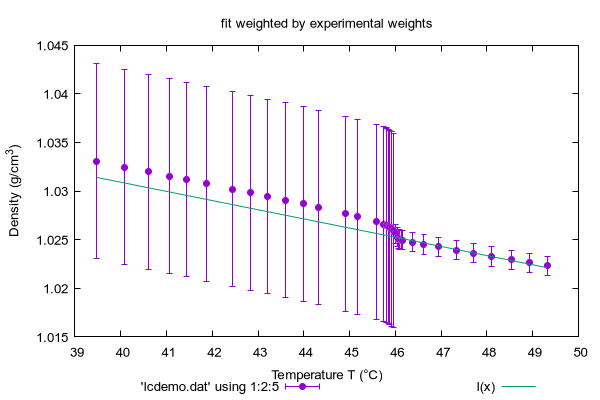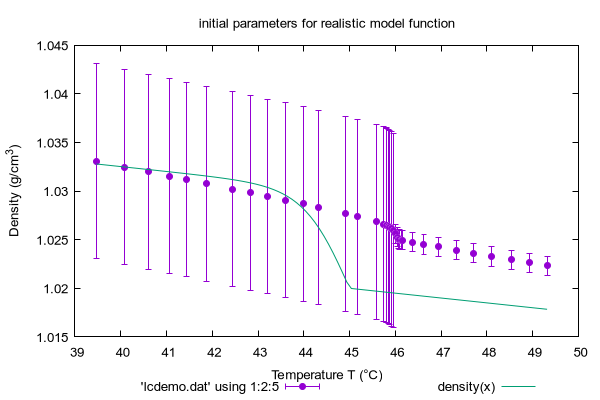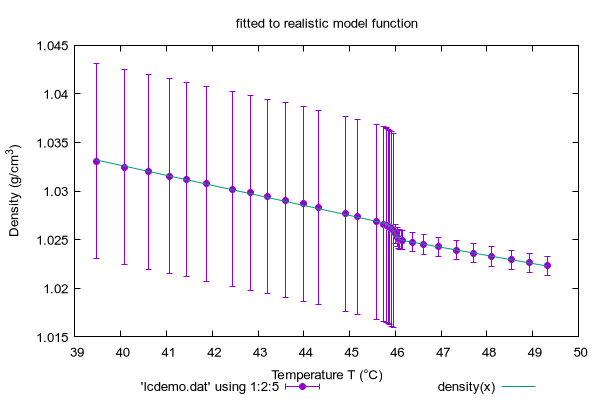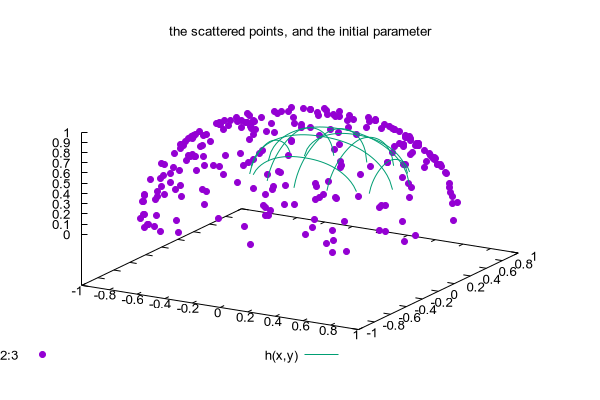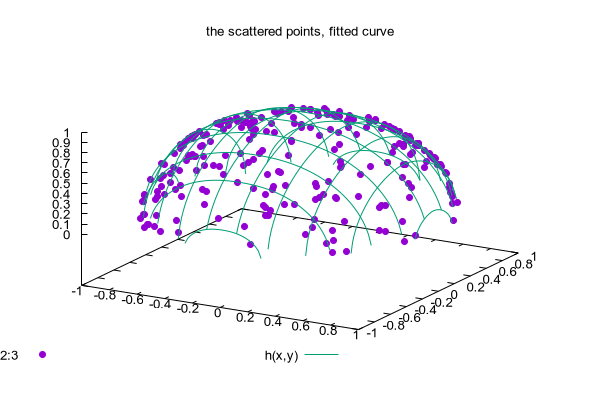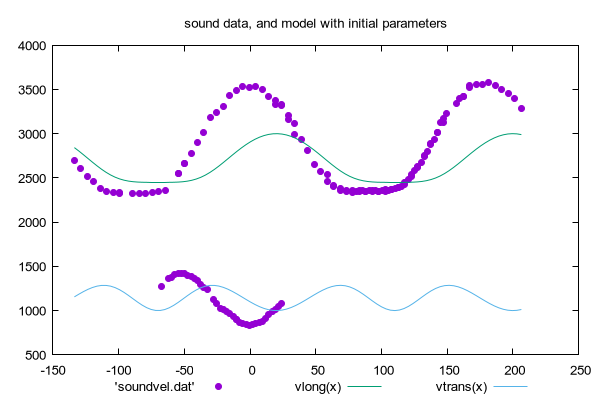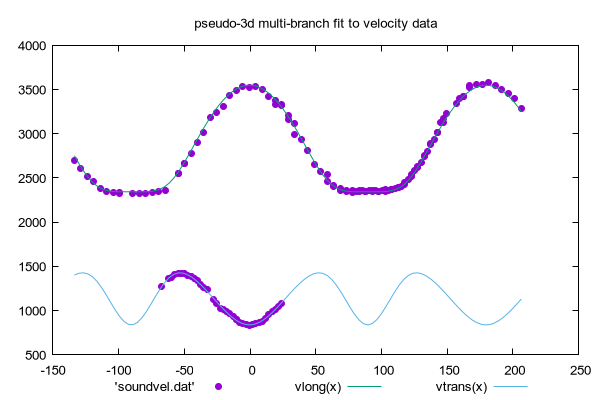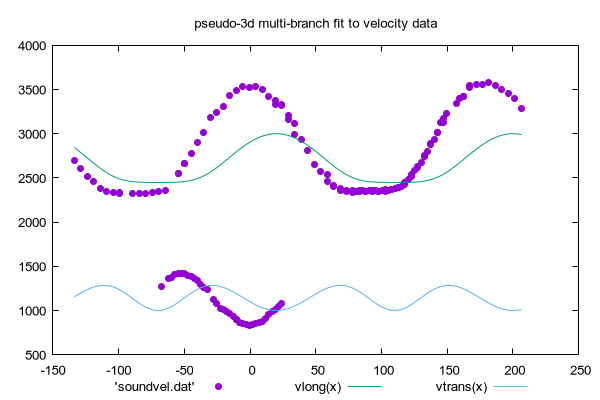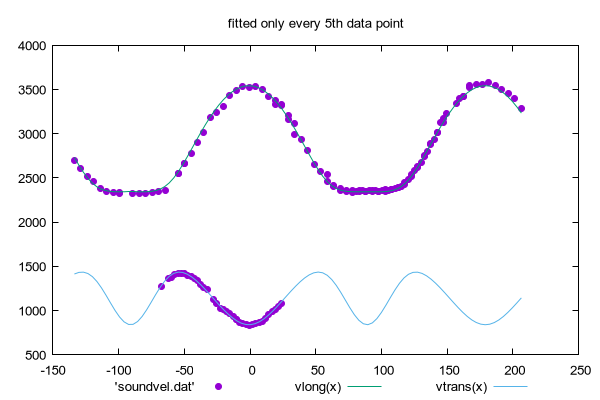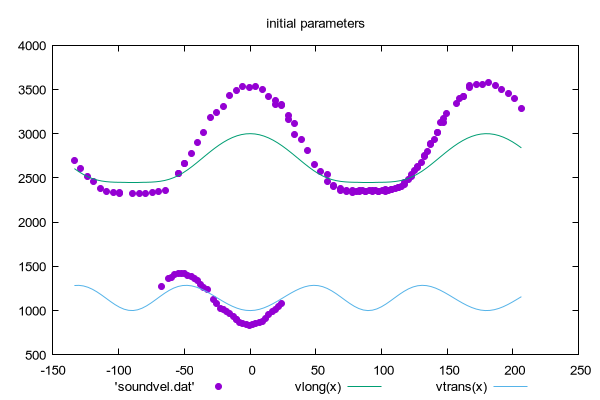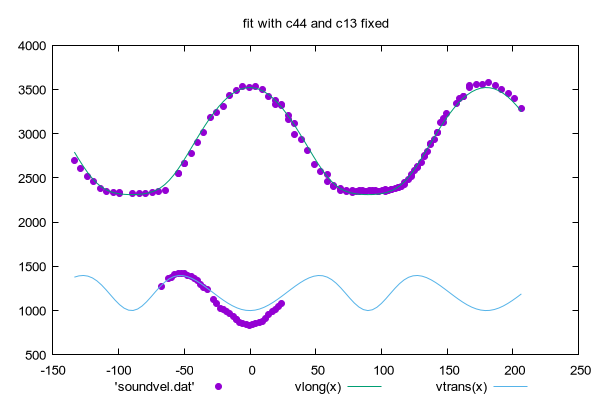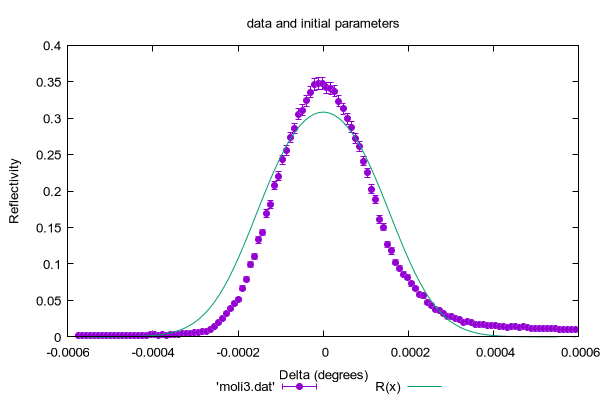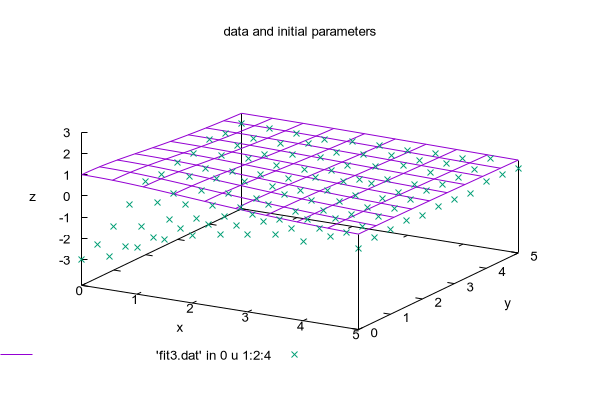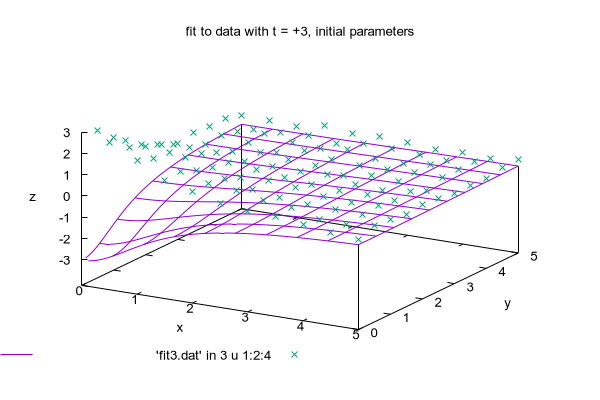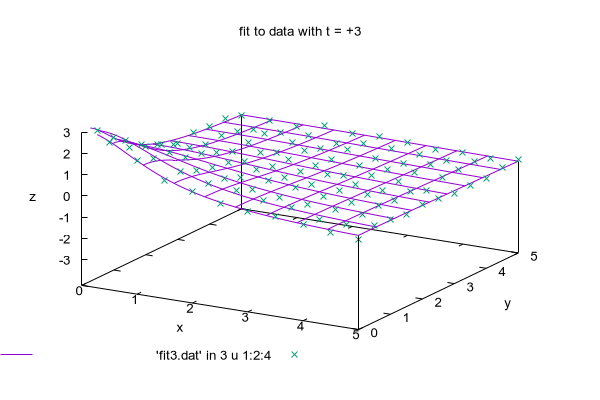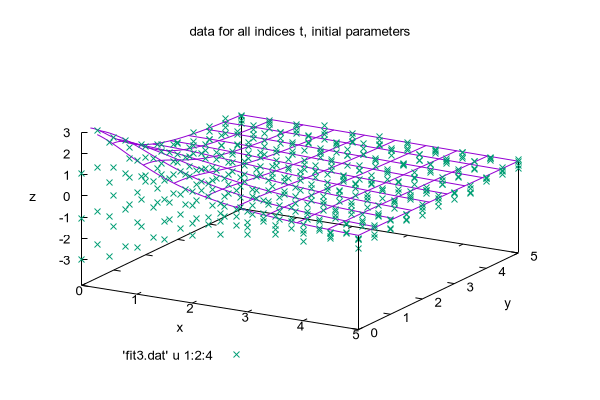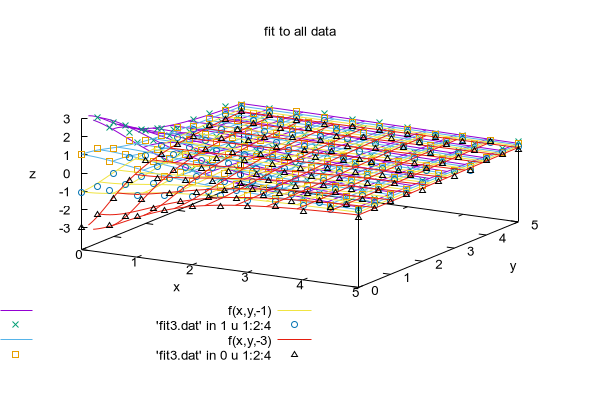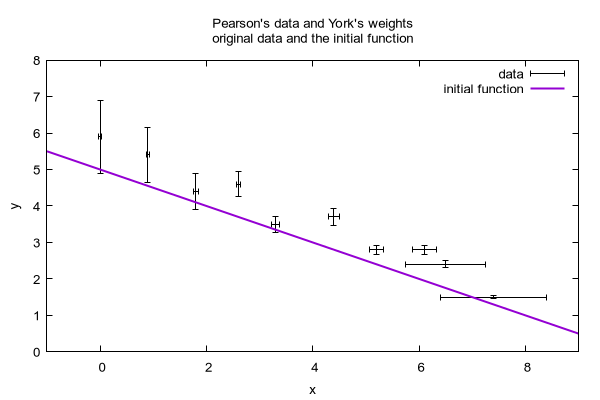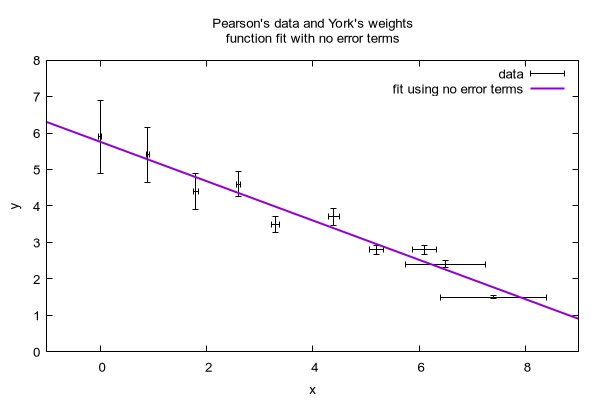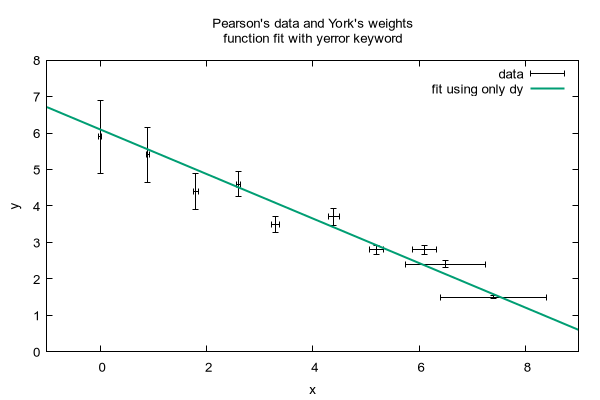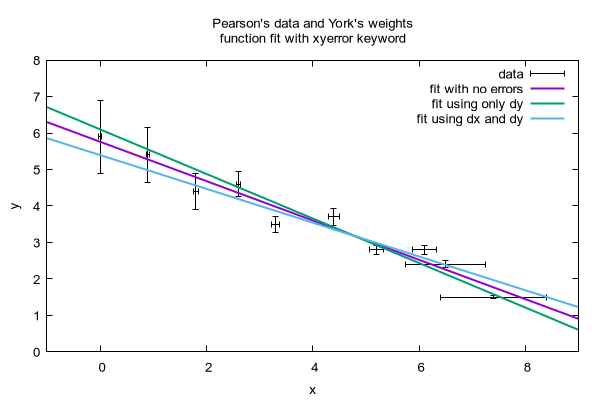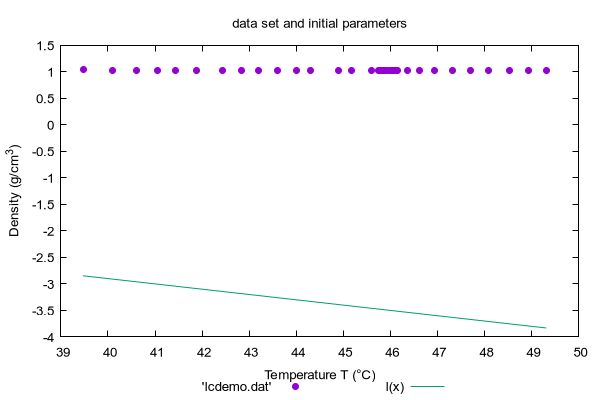
myencoding = GPVAL_ENCODING
set encoding utf8
set termoption enhanced
set style data points
set dummy x, y
print "Some examples how data fitting using nonlinear least squares fit can be done."
print ''
print "We fit a straight line to the data -- only as a demo without physical meaning."
l(x) = y0 + m*x
# Although gnuplot's internal fit backend can cope with it in this
# case, initializing variables to zero is a no, no, no!
#y0 = 0.0
#m = 0.0
y0 = 1.1
m = -0.1
print " fit function:", GPFUN_l
print sprintf(" initial parameters: y0 = %g, m = %g", y0, m)
print " fit command: fit l(x) 'lcdemo.dat' via y0, m\n"
set xlabel "Temperature T (°C)"
set ylabel "Density (g/cm^3)"
set key below
set title 'data set and initial parameters'
plot 'lcdemo.dat', l(x)
Click here for minimal script to generate this plot

